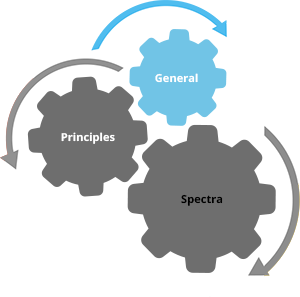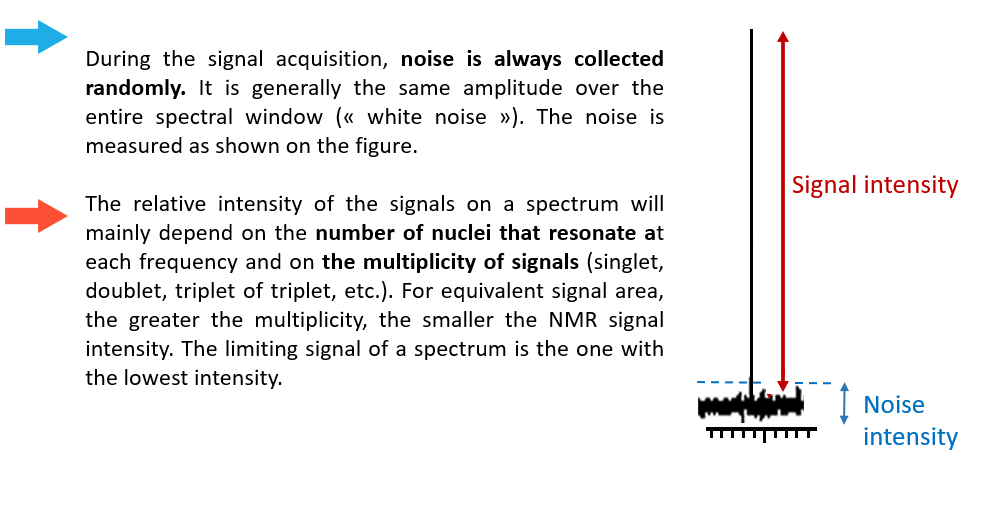NMR generalities
NMR experiments are carried out in two steps

Signal acquisition
The acquisition of data in NMR experiments from a sample placed in an intense B0 field requires two successive steps:
- Excitation => application of a radio-frequency pulse (ν1) for a given time in the simplest case (“One-Pulse” experiment) => PW (usually lasting a few microseconds). Many multi-pulse experiments exist to specifically edit certain NMR data.
- Detection => of the free induction decay (FID) which decreases over time until the system recovers its equilibrium state. This signal is recorded over a time period => AQ (usually lasting a few seconds).

Signal processing: the Fourier transform
The first step is to carry out a Fourier Transform (FT) on the FID, a mathematical operation that transforms a signal that changes with time (FID) into a frequency-dependent signal (spectrum). An NMR spectrum is the Fourier transform of the FID.

It is possible to improve certain characteristics of a spectrum by multiplying the FID by an apodization function before carrying out the FT. The most commonly used apodization functions can improve the signal-to-noise ratio or the digital resolution of the spectrum. After acquiring an NMR signal it is therefore possible to apply different treatments on the FID.








